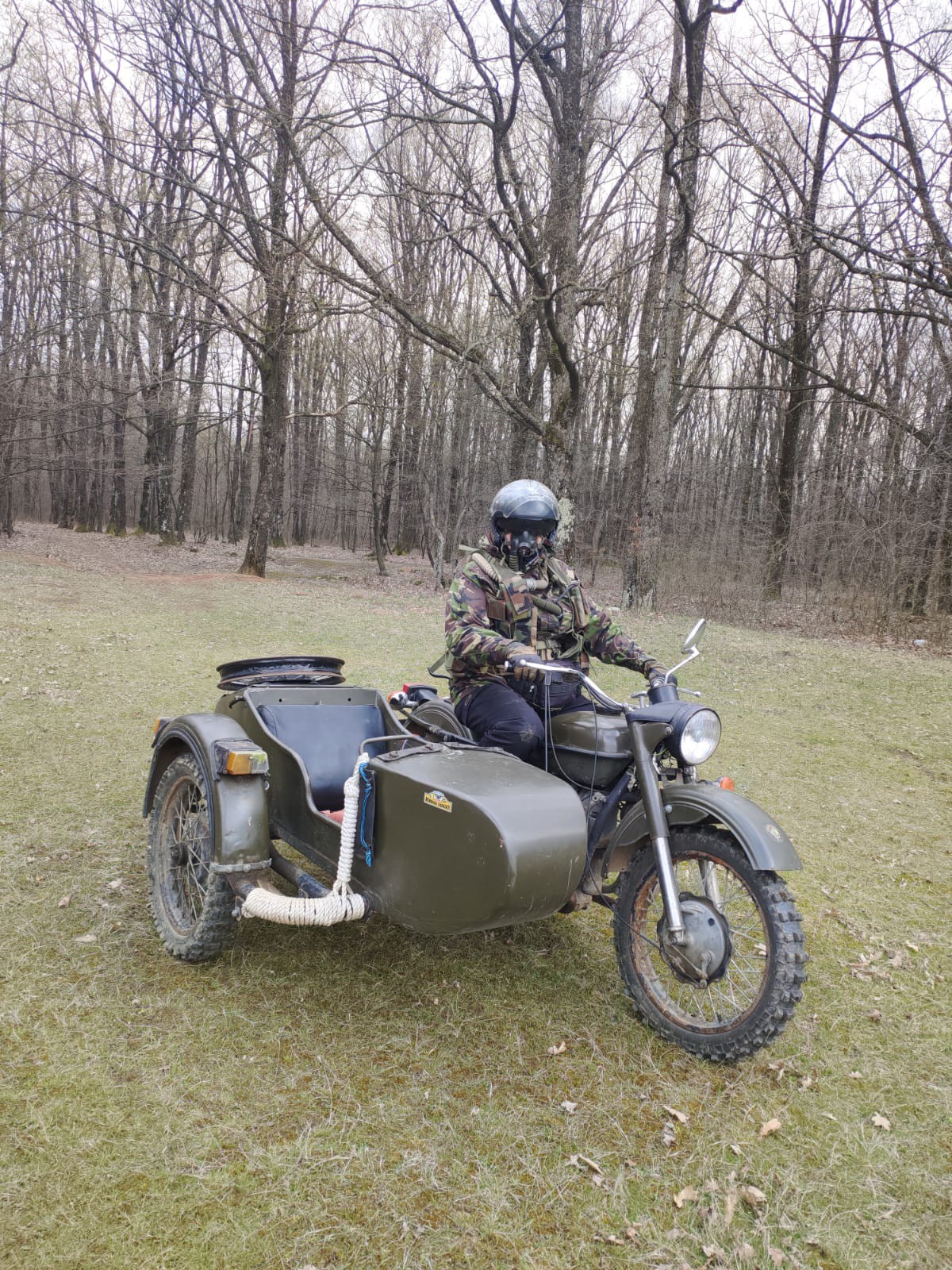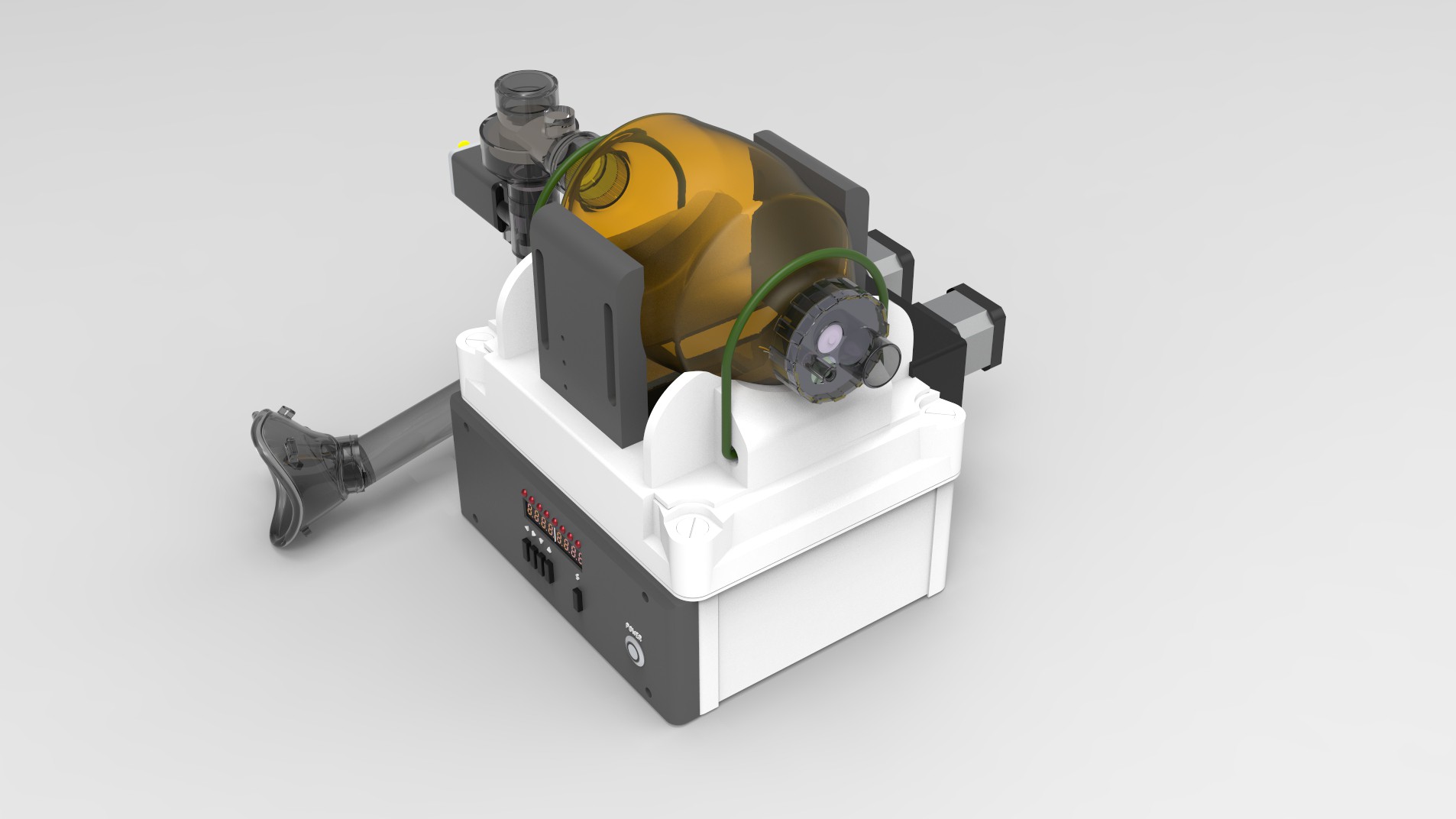![]() Trying that, for sure, so far, no joy
Trying that, for sure, so far, no joy
 @cl488 - Welcome!
@cl488 - Welcome!
 @luther There are a lot of medical professionals advising here. Where we have been getting our critical data.
@luther There are a lot of medical professionals advising here. Where we have been getting our critical data.
https://join.slack.com/t/helpfulengineering/shared_invite/zt-d9imalxu-~ZtKTdSq2bC8kTt2vcVVIw
![]() My Hack to keep sane is to work on ANY of the 176354299 unfinished project list :)
My Hack to keep sane is to work on ANY of the 176354299 unfinished project list :)
 @luther I had the opportunity to spend time testing a tidal flow meter last Saturday at UCLA, interfacing with a working ventilator and asking questions with knowledgable folks, I learned alot. Don't claim to be an expert, but happy to answer questions
@luther I had the opportunity to spend time testing a tidal flow meter last Saturday at UCLA, interfacing with a working ventilator and asking questions with knowledgable folks, I learned alot. Don't claim to be an expert, but happy to answer questions
![]() @Dan Maloney I'm finally getting around to all those projects and kits that have been laying around for years. But since I'm working, I don't have that much time free.
@Dan Maloney I'm finally getting around to all those projects and kits that have been laying around for years. But since I'm working, I don't have that much time free.
![]() Anyone who wants to reach me - luther@makerlisp.com, 617 308 4698
Anyone who wants to reach me - luther@makerlisp.com, 617 308 4698
 @Patrick is running a successful project for ventilator sensing over at helpfulengineering Slack channel.
@Patrick is running a successful project for ventilator sensing over at helpfulengineering Slack channel.
![]() @Patrick, email me when you can
@Patrick, email me when you can
 I read all the comments and suggestions and links as well as I could.
I read all the comments and suggestions and links as well as I could.
This discussion will not lead to much. It stirs things here, but has no permanent impact. What is needed are long term combined efforts of many people.
The important part is to have places for each of these concepts and ideas to be worked out completely.
Not ten million individual efforts, but a thousand combined efforts of ten thousand each.
Perhaps that is something that HackaDay.IO could try.
Unless there were a major breakdown of society, thre is no way any medical person or group will let hackers experiment with people. No matter how smart or well intentioned. But a formal group, working under strict guidelines with medical and legal and financial advisors --- might.
Even a thousand such groups - they all would have the same organizational structure, just different topics and content.
One tool, different topics. Hackaday.io software on steroids. Or just done extremely well with nothing missed.
![]() @Patrick "luther@makerlisp.com"
@Patrick "luther@makerlisp.com"
 @luther email sent
@luther email sent
 @DrG What's the project 176354299 list?
@DrG What's the project 176354299 list?
![]() I’ve been using ventilators full time since 1995. I wanted to comment that iron lungs are relics. I watched a news piece about them a few years ago. There’s maybe 4-5 users in the USA if I recall correctly. Basically those users are friends with machinists and other hackers to keep those iron lungs going
I’ve been using ventilators full time since 1995. I wanted to comment that iron lungs are relics. I watched a news piece about them a few years ago. There’s maybe 4-5 users in the USA if I recall correctly. Basically those users are friends with machinists and other hackers to keep those iron lungs going
![]() Thanks
Thanks
 You are correct that except under circumstances in which the doctors, hospitals, and patients have literally nothing to lose, you are unlikely to see many of these proposals tried, much less adopted.
You are correct that except under circumstances in which the doctors, hospitals, and patients have literally nothing to lose, you are unlikely to see many of these proposals tried, much less adopted.
![]() @Dustin Sysko umm the (somehwat exagerated) number of projects that I will get to
@Dustin Sysko umm the (somehwat exagerated) number of projects that I will get to
 OK, then - we're at the top of the hour, but since there's no host to let get back to work, we can keep the chat going. Or not, whichever way works for me. I'll just put an official wrap on the chat and say thanks to everyone for participating, and tolerating something a little bit different this week.
OK, then - we're at the top of the hour, but since there's no host to let get back to work, we can keep the chat going. Or not, whichever way works for me. I'll just put an official wrap on the chat and say thanks to everyone for participating, and tolerating something a little bit different this week.
 ....ways to keep safe and sane during isolation?
....ways to keep safe and sane during isolation?


 @RichardCollins That is happening, with legal entity protection for members, clinical trials, oversight, teams with split goals... good documentation... Just need to be in the right group.
@RichardCollins That is happening, with legal entity protection for members, clinical trials, oversight, teams with split goals... good documentation... Just need to be in the right group.
 that is my method of staying safe and sane...
that is my method of staying safe and sane...
 Next week we'll be talking about PCB Bring-Up with Mihir Shah from InspectAR. Sorry, no link yet :-p
Next week we'll be talking about PCB Bring-Up with Mihir Shah from InspectAR. Sorry, no link yet :-p
![]() I’m curious if there’s any efforts to make very low cost PCR machines. Anything below $1,000?
I’m curious if there’s any efforts to make very low cost PCR machines. Anything below $1,000?
![]() @Dan Maloney Thanks for moderating in these crazy times
@Dan Maloney Thanks for moderating in these crazy times
 I second that... Today was an exercise in cat herding.
I second that... Today was an exercise in cat herding.
 @Dan Maloney thank you for bringing us together
@Dan Maloney thank you for bringing us together
![]() Yes, thank you much.
Yes, thank you much.
 @cl488 - That should be very doable for a simple thermal cycler. For a fully integrated qPCR with fluorescence detectors, it's more complicated. I know there's a company selling open source qPCR machines for around $5-6k, which is super reasonable for scientific instruments
@cl488 - That should be very doable for a simple thermal cycler. For a fully integrated qPCR with fluorescence detectors, it's more complicated. I know there's a company selling open source qPCR machines for around $5-6k, which is super reasonable for scientific instruments
 @RichardCollins Don't overlook that medical devices are developed by engineers. When those engineers communicate within a larger community, like hackaday, they can share ideas.
@RichardCollins Don't overlook that medical devices are developed by engineers. When those engineers communicate within a larger community, like hackaday, they can share ideas.
The problems aren't _solved_ by this discussion. The engineers are inspired or connected to solve the problems.
These conversations are a net good. Not worthless.


 building a portable one
building a portable one
 guys watch the film here https://hackaday.com/2020/04/07/real-engineering-behind-ventilators/ it has EXTREMELY USEFUL information
guys watch the film here https://hackaday.com/2020/04/07/real-engineering-behind-ventilators/ it has EXTREMELY USEFUL information
 This was actually way more fun than I thought it would be. Figured it was going to be difficult, but everyone made it a snap. Thanks all!
This was actually way more fun than I thought it would be. Figured it was going to be difficult, but everyone made it a snap. Thanks all!
 @Daren Schwenke is correct. We've been able to get attorneys familiar with the FDA process to advise us, pro-bono. The FDA EAU process is challenging, but you need documentation. And with it, you get liability immunity.
@Daren Schwenke is correct. We've been able to get attorneys familiar with the FDA process to advise us, pro-bono. The FDA EAU process is challenging, but you need documentation. And with it, you get liability immunity.
![]() @Dan Maloney Yes, I saw that company. Can a simple thermal cycler detect covid19?
@Dan Maloney Yes, I saw that company. Can a simple thermal cycler detect covid19?
 @dannyvandenheuvel can you get 0.3s inhale times with your (guessing) lead screw? That, and about 5kg of force, 30W of power are the targets.
@dannyvandenheuvel can you get 0.3s inhale times with your (guessing) lead screw? That, and about 5kg of force, 30W of power are the targets.
 I can only link the invite, which will expire I know. got a better link @Patrick ?
I can only link the invite, which will expire I know. got a better link @Patrick ?
 yep, 2 spindels each moving 50 mm with 20 kg horizontal pressure
yep, 2 spindels each moving 50 mm with 20 kg horizontal pressure
 max 35 cycles a minute
max 35 cycles a minute
 If the virus only spread as small droplets, can artificial airflow before our face makes any difference?
If the virus only spread as small droplets, can artificial airflow before our face makes any difference?
 automatic breathing system with pressure sensing
automatic breathing system with pressure sensing
 I'll post what I have, but it will expire after 2000 users. This is the Slack channel that Patrick and I have been working with others on. Different teams, different goals, but the same oversight and methodology: https://join.slack.com/t/helpfulengineering/shared_invite/zt-d9imalxu-~ZtKTdSq2bC8kTt2vcVVIw
I'll post what I have, but it will expire after 2000 users. This is the Slack channel that Patrick and I have been working with others on. Different teams, different goals, but the same oversight and methodology: https://join.slack.com/t/helpfulengineering/shared_invite/zt-d9imalxu-~ZtKTdSq2bC8kTt2vcVVIw
 But there are teams, and there is structure and oversight, and... targets to hit.
But there are teams, and there is structure and oversight, and... targets to hit.
![]() I am currently starting a project that utilizes analytic combinatorics to understand the CoronaVirus types I and II DNA and RNA.
I am currently starting a project that utilizes analytic combinatorics to understand the CoronaVirus types I and II DNA and RNA.
![]() Would anybody be interested ???
Would anybody be interested ???
 it follows the rithm of the patient as long he is breathing be himself , otherwiss the machine takes over and give a warning
it follows the rithm of the patient as long he is breathing be himself , otherwiss the machine takes over and give a warning
full logging capabilities.
![]() @macitisand those interested in face mask efficacy, take a look at a hard assessment of face shield and one that used particle detection and cough simulators - it is eye opening imo https://www.ncbi.nlm.nih.gov/pmc/articles/PMC4734356/
@macitisand those interested in face mask efficacy, take a look at a hard assessment of face shield and one that used particle detection and cough simulators - it is eye opening imo https://www.ncbi.nlm.nih.gov/pmc/articles/PMC4734356/
 its based upon the bme280 chip sensor
its based upon the bme280 chip sensor
 @dannyvandenheuvel Good job. I would pick one of the standards documents put out for ventilators and go down the list and see which boxes you check, and which you don't to make sure you are developing something that meets the requirements. And we are using the BMP388, well... 4 of them. :)
@dannyvandenheuvel Good job. I would pick one of the standards documents put out for ventilators and go down the list and see which boxes you check, and which you don't to make sure you are developing something that meets the requirements. And we are using the BMP388, well... 4 of them. :)
 Guys, take care and be safe. I'm out, sleep
Guys, take care and be safe. I'm out, sleep
 Greetings from Dracula's Realm
Greetings from Dracula's Realm
 Thank you @[skaarj] Stay safe.
Thank you @[skaarj] Stay safe.
 @DrG thanks for the link.
@DrG thanks for the link.
 Everything has to be monitored very carefully, its a human and his lungs are very imported not to damage it.
Everything has to be monitored very carefully, its a human and his lungs are very imported not to damage it.
 Stay safe people, I want everybody here to have a cold beer together when this mess is over. @Dan Maloney if you want to laugh hard, check my project page. You will not regret. There's some forgotten magic explained there.
Stay safe people, I want everybody here to have a cold beer together when this mess is over. @Dan Maloney if you want to laugh hard, check my project page. You will not regret. There's some forgotten magic explained there.
![]() Also I am in the process of utilizing a paper that was written by Chinese scientists in Wuhan via the NIH. This paper describes developing a sensor for SARS related viruses. My background is in electrical engineering applied math my other co-worker is a phd in analytical and electrochemistry.
Also I am in the process of utilizing a paper that was written by Chinese scientists in Wuhan via the NIH. This paper describes developing a sensor for SARS related viruses. My background is in electrical engineering applied math my other co-worker is a phd in analytical and electrochemistry.
 @Daren Schwenke Thanks for the HelpfulEngineering link. Going to see how I can contribute there.
@Daren Schwenke Thanks for the HelpfulEngineering link. Going to see how I can contribute there.
 building it is one thing , spreading it into the world at mass volume will be another challence
building it is one thing , spreading it into the world at mass volume will be another challence
 @Dustin Sysko Welcome. It's a couple weeks in already over there, but there is still work to be done pretty much everywhere.
@Dustin Sysko Welcome. It's a couple weeks in already over there, but there is still work to be done pretty much everywhere.
 That it can be cheap is no problem, all is build upon electronics we all use nowadays
That it can be cheap is no problem, all is build upon electronics we all use nowadays
 Lots of really smart people from all walks. 20k strong at last count...
Lots of really smart people from all walks. 20k strong at last count...
 I'm out.. back to work. Stay safe @Everyone and if you are trying to build a ventilator and get to the sensing part.. and noticing that everything standard is out of stock all of a sudden, take a look at #VISP - Ventilator Inline Sensor Package
I'm out.. back to work. Stay safe @Everyone and if you are trying to build a ventilator and get to the sensing part.. and noticing that everything standard is out of stock all of a sudden, take a look at #VISP - Ventilator Inline Sensor Package
![]() A ventalitor would be a good idea within emergency care units...
A ventalitor would be a good idea within emergency care units...
![]() dannyvandenheuvel is there a way to test this device first. How would you test it safely with the knowledge that it is 100 percent safe.
dannyvandenheuvel is there a way to test this device first. How would you test it safely with the knowledge that it is 100 percent safe.
![]() Because usually ventalitors have filters that have a specific resolution of air particles.
Because usually ventalitors have filters that have a specific resolution of air particles.
![]() resolution of air particles that are allowed to come through...
resolution of air particles that are allowed to come through...
 first we do test on some test lungs and use measurement equipment to get the results, we will be setting up a group conversation with medical people when we are finished the first build.
first we do test on some test lungs and use measurement equipment to get the results, we will be setting up a group conversation with medical people when we are finished the first build.
![]() What I mean is that there is a specific diameter of particles that cannot pass the threshhold of the ventilator filters. sorry english not my first language.
What I mean is that there is a specific diameter of particles that cannot pass the threshhold of the ventilator filters. sorry english not my first language.
 Dan Maloney
Dan Maloney
Discussions
Become a Hackaday.io Member
Create an account to leave a comment. Already have an account? Log In.